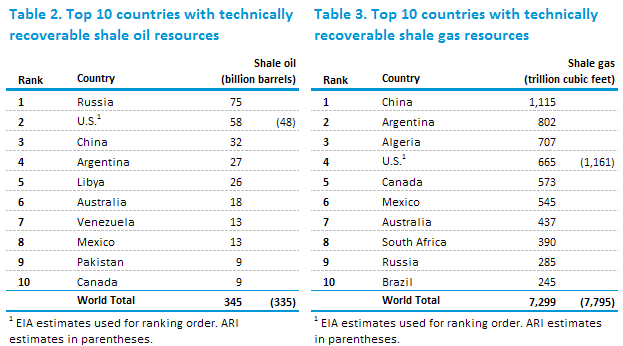
by Joel Abraham Enríquez *
A reloaded Gas & Oil Boom -in that order– may deliver strategic benefits for the entire region and renew North America’s geopolitical hegemony by changing current global trends in the short term. But on the top of our priorities, this glut strengthens all North American region advancing our global strategic climate-change power and using our environment bounty to our advantage.
The fortunes of energy can rebalance competition and cooperation with, the new and traditional great world powers. Yes, you are right, to catch up with China, Russia, and–for the bonus points–India. Significant access to massive gas & oil reserves by the United States, Canada, and Mexico combined, could reshape this century’s history unfolding the world’s most significant gas reserves. It could also become a decisive game changer to accelerate our regional climate change ambitions while eclipsing Russia’s and China’s hegemonic economic and expansionist ambitions.
However, before saving North America, let us tackle some ghosts. Let us understand today´s geo/regional-political whims. Ever since the last century, energy independence has been a most sought-after national security goal of the U.S. Yet, in the most unanticipated ways, the unconventional revolution finally has brought the U.S. closer to its independence, rapidly moving from a situation of energy duress to one of energy prowess.
If we unpack some of the complexities in the region, the current President of Mexico, Andrés Manuel López Obrador, has highlighted the dangers of Mexico’s reliance on US energy; he rambles heroic speeches quoting President Lázaro Cardenas and his nationalist passion, hoping it will deliver us from neoliberal and U.S. evil. Not only has he long been an opponent of Mexico’s recent reforms that opened the energy sector, but he has made clear his intentions to undo them if given the opportunity. A scenario where Mexico rolls back its energy reform could be a significant drag to a dozen of significant American and Canadian energy companies. Furthermore, it also could have numerous implications for U.S. national security. This would includes significantly less demand for U.S. natural gas exports to Mexico (almost two-thirds of total U.S. natural gas exports) and losing a crucial opportunity to consolidate and to establish itself as a regional and global powerhouse over the next decade, thus adding power and much needed leverage.
Commercial and joint production interrelations in North America could benefit significantly from the expansion of our cross-border gas infrastructure. After some awkward interruptions, it could quickly go back to a fast-paced development, and to have the world’s most competitive energy price for our companies and domestic consumers. That is: an unmatchable advantage for our economic dominance and national/regional income. For example, Mr. Warren Levy, a senior gas & oil executive based in Mexico City, explained his regional experience to me: “If I need in Mexico a highly specialized piece of equipment from the United States, I can have it anywhere in Mexico within 48 hours,” he said, “if I were seeking to use that same equipment in Colombia, it would take more like 48 days, and in Argentina, closer to four-and-a-half months.”
Aligning and democratizing the supply of gas (the so-called regional cartelization) could be of great use, particularly to our North American vast region. First, at a common reserves level, by bringing together American, Canadian, and Mexican gas reserves. Then, we could endow our industries with cheap energy to rebalance the manufacturing dependence on China including also safer work places and more equitable worker wages in our region under the USMCA trade agreement.

Geographically and structurally, exploiting North American gas reserves should be easier to exploit than those in China or Russia, given than the latter are located in remote or difficult-access areas. Actually, China’s reserves are located in very arid areas with limited water which is currently a crucial input to the fracking process. In Siberia, Russia, reserves require costly infrastructure to effectively perform gas transportation; commercializing gas thus becomes increasingly expensive.
Supply independence, but what about the market?
Based on Investopedia data, North America’s combined nominal GDP is US $24.39 trillion (21.44b from the U.S + 1.73b from Canada + 1.22b from Mexico). It is doubtless the most dynamic, high-income market, home to 491.99 million people/consumers. The region has a great demand advantage given that Mexico and Canada could presumably satisfy U.S. external demand for oil in the short term. At the same time, we could substantially affect our internal energy matrix by declining oil consumption and moving toward a more sustainable gas generation.
This gas energy buffer could mean a golden advantage that would allow for the transition to a cleaner energy era. Incentives are strong. In very few years we could see North American outstanding developments in new and more powerful energies that will probably skyrocket our electricity, space, and transport science.
In conclusion, a North American Powerhouse means more than just policies to promote gas and oil. It means thinking about the profound effects on North America’s future that could balance the world’s ability to transit to a cleaner, safer, fair and democratic energy era.
* Joel Abraham Enríquez is Chief Governance Officer (CGO) & Corporate Affairs at Jaguar Exploration and Production, responsible for strategic communications, legal counsel, security, CSR & BC. He is also a member of the Young Advisory Council of of The US-Mexico Foundation, a binational non-profit organization dedicated to fostering bilateral cooperation and improving the understanding between the United States and Mexico by activating key people in the relationship that once were dormant.


